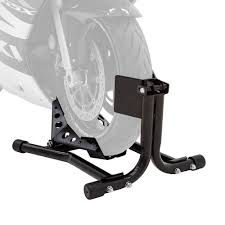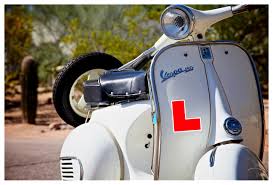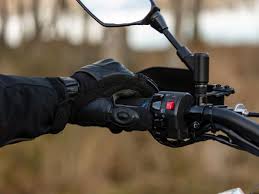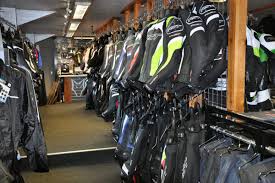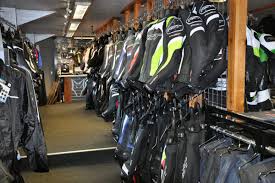Enhancing Rider Safety: The Importance of Motorcycle Hand Guards
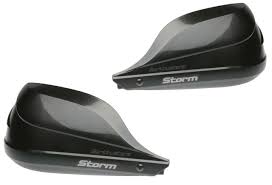
The Importance of Motorcycle Hand Guards
Motorcycle hand guards are essential accessories for riders, providing protection and added safety during rides. These guards attach to the handlebars of a motorcycle and offer several benefits that can enhance the overall riding experience.
Protection from Weather Elements
One of the primary functions of motorcycle hand guards is to shield riders’ hands from various weather conditions. Whether it’s rain, wind, or cold temperatures, hand guards provide a barrier that helps keep hands dry and warm, allowing for a more comfortable ride in adverse weather.
Impact Protection
In addition to weather protection, hand guards also serve as a barrier against impacts and debris. When riding off-road or on challenging terrains, branches, rocks, or other obstacles can pose a risk to riders’ hands. Hand guards help deflect these hazards, reducing the likelihood of injuries.
Enhanced Safety
Motorcycle hand guards contribute to rider safety by preventing accidental contact with obstacles or other vehicles. In case of a fall or collision, hand guards can protect riders’ hands from getting injured and minimize the risk of fractures or cuts.
Improved Comfort and Control
By reducing wind resistance and keeping hands warm and dry, hand guards enhance rider comfort during long rides. They also provide additional grip options on rough terrains, allowing for better control and stability when navigating challenging conditions.
Customization and Style
Besides their functional benefits, motorcycle hand guards come in various designs and colours, allowing riders to customise their bikes according to their preferences. Whether you prefer a sleek black look or a vibrant colour scheme, hand guards offer an opportunity to add personal style to your motorcycle.
In Conclusion
Motorcycle hand guards are not just accessories; they are essential components that enhance rider safety, comfort, and control. By investing in quality hand guards for your motorcycle, you can enjoy a more enjoyable and secure riding experience in various conditions.
Essential FAQs About Motorcycle Hand Guards: Protection, Installation, and Maintenance
- What are motorcycle hand guards?
- Why are hand guards important for motorcycles?
- How do hand guards protect riders?
- Do hand guards help in adverse weather conditions?
- Are hand guards easy to install on motorcycles?
- Do hand guards come in different sizes and designs?
- Can hand guards reduce the risk of injuries during falls or collisions?
- Do hand guards affect the handling of a motorcycle?
- Are there specific maintenance requirements for motorcycle hand guards?
What are motorcycle hand guards?
Motorcycle hand guards are protective accessories designed to attach to the handlebars of a motorcycle. These guards serve multiple purposes, including shielding riders’ hands from weather elements such as rain, wind, and cold temperatures. Additionally, they provide impact protection by deflecting debris and obstacles encountered while riding off-road or on challenging terrains. Motorcycle hand guards also enhance safety by reducing the risk of hand injuries in case of falls or collisions. Beyond their protective functions, hand guards can improve rider comfort by minimizing wind resistance and offering additional grip options for better control. Overall, motorcycle hand guards are essential components that contribute to a safer, more comfortable, and enjoyable riding experience for motorcyclists.
Why are hand guards important for motorcycles?
Hand guards are crucial accessories for motorcycles due to their multifaceted benefits. These protective shields play a vital role in safeguarding riders’ hands from adverse weather conditions such as rain, wind, and cold temperatures, ensuring comfort and safety during rides. Moreover, hand guards provide impact protection by deflecting debris and obstacles encountered while riding, reducing the risk of injuries. They contribute to enhanced safety by preventing accidental contact with hazards and offering a layer of defence in case of falls or collisions. Additionally, hand guards improve rider comfort and control by minimising wind resistance, keeping hands warm and dry, and providing better grip options on challenging terrains. Overall, motorcycle hand guards are indispensable accessories that not only enhance the riding experience but also prioritise rider safety and well-being on the road.
How do hand guards protect riders?
Hand guards play a crucial role in protecting riders by serving as a shield against various hazards and elements encountered during motorcycle rides. They provide a physical barrier that helps safeguard riders’ hands from adverse weather conditions such as rain, wind, and cold temperatures, ensuring comfort and warmth during rides. Additionally, hand guards offer impact protection by deflecting debris, branches, or rocks that could potentially cause injuries to the hands. In the event of a fall or collision, hand guards act as a protective layer, reducing the risk of hand injuries and enhancing overall rider safety on the road.
Do hand guards help in adverse weather conditions?
Motorcycle hand guards play a crucial role in protecting riders from adverse weather conditions. Whether it’s rain, wind, or cold temperatures, hand guards act as a barrier that shields hands from the elements, keeping them dry and warm. This added protection not only enhances rider comfort during challenging weather but also contributes to overall safety by ensuring that hands remain functional and responsive. By deflecting wind and precipitation, hand guards help riders maintain a secure grip on the handlebars, improving control and stability even in unfavourable weather conditions. In essence, hand guards are essential accessories that significantly aid in combating adverse weather while riding a motorcycle.
Are hand guards easy to install on motorcycles?
Installing hand guards on motorcycles is a straightforward process that can typically be completed with basic tools and minimal mechanical expertise. Most hand guards come with installation instructions that guide users through the steps required to attach them securely to the handlebars. The process usually involves mounting the guards onto the handlebars using clamps or brackets, ensuring a snug fit for optimal protection. With a bit of patience and attention to detail, riders can easily install hand guards on their motorcycles to enjoy the added benefits they provide in terms of protection, safety, and comfort during rides.
Do hand guards come in different sizes and designs?
When it comes to motorcycle hand guards, riders often wonder if they come in different sizes and designs. The answer is yes – hand guards are available in a variety of sizes and designs to suit different motorcycles and rider preferences. From sleek and minimalist designs to more robust and intricate styles, there is a wide range of options to choose from. Whether you prefer a subtle addition to your bike’s aesthetics or a bold statement piece, you can find hand guards that not only provide protection but also enhance the overall look of your motorcycle.
Can hand guards reduce the risk of injuries during falls or collisions?
Motorcycle hand guards play a crucial role in reducing the risk of injuries during falls or collisions. By providing a protective barrier for riders’ hands, hand guards help prevent direct contact with obstacles or the ground in case of an accident. In situations where a rider may lose control of their motorcycle and tip over, hand guards can absorb some of the impact and shield the hands from potential injuries such as fractures or cuts. Additionally, hand guards can help maintain a rider’s grip on the handlebars during unexpected events, enhancing overall control and stability to mitigate the severity of accidents. Overall, investing in quality hand guards can significantly contribute to rider safety and reduce the risks associated with falls or collisions while riding a motorcycle.
Do hand guards affect the handling of a motorcycle?
One frequently asked question regarding motorcycle hand guards is whether they affect the handling of a motorcycle. The answer to this question depends on various factors, such as the design and installation of the hand guards, as well as the type of riding conditions. In general, well-installed hand guards that are lightweight and aerodynamic should not significantly impact the handling of a motorcycle. However, bulky or poorly fitted hand guards may create wind resistance or interfere with the rider’s grip on the handlebars, potentially affecting manoeuvrability. It is important to choose high-quality hand guards that are suitable for your bike and riding style to ensure minimal impact on handling while enjoying the added protection and comfort they provide.
Are there specific maintenance requirements for motorcycle hand guards?
When it comes to motorcycle hand guards, there are specific maintenance requirements to ensure optimal performance and longevity. Regularly inspecting the hand guards for any signs of damage, such as cracks or loose fittings, is essential. Cleaning the guards with mild soap and water to remove dirt and debris can help maintain their appearance and functionality. Additionally, checking the mounting hardware for tightness and making any necessary adjustments is crucial to prevent the guards from becoming loose during rides. By following these maintenance practices, riders can ensure that their motorcycle hand guards continue to provide protection and enhance their riding experience effectively.

